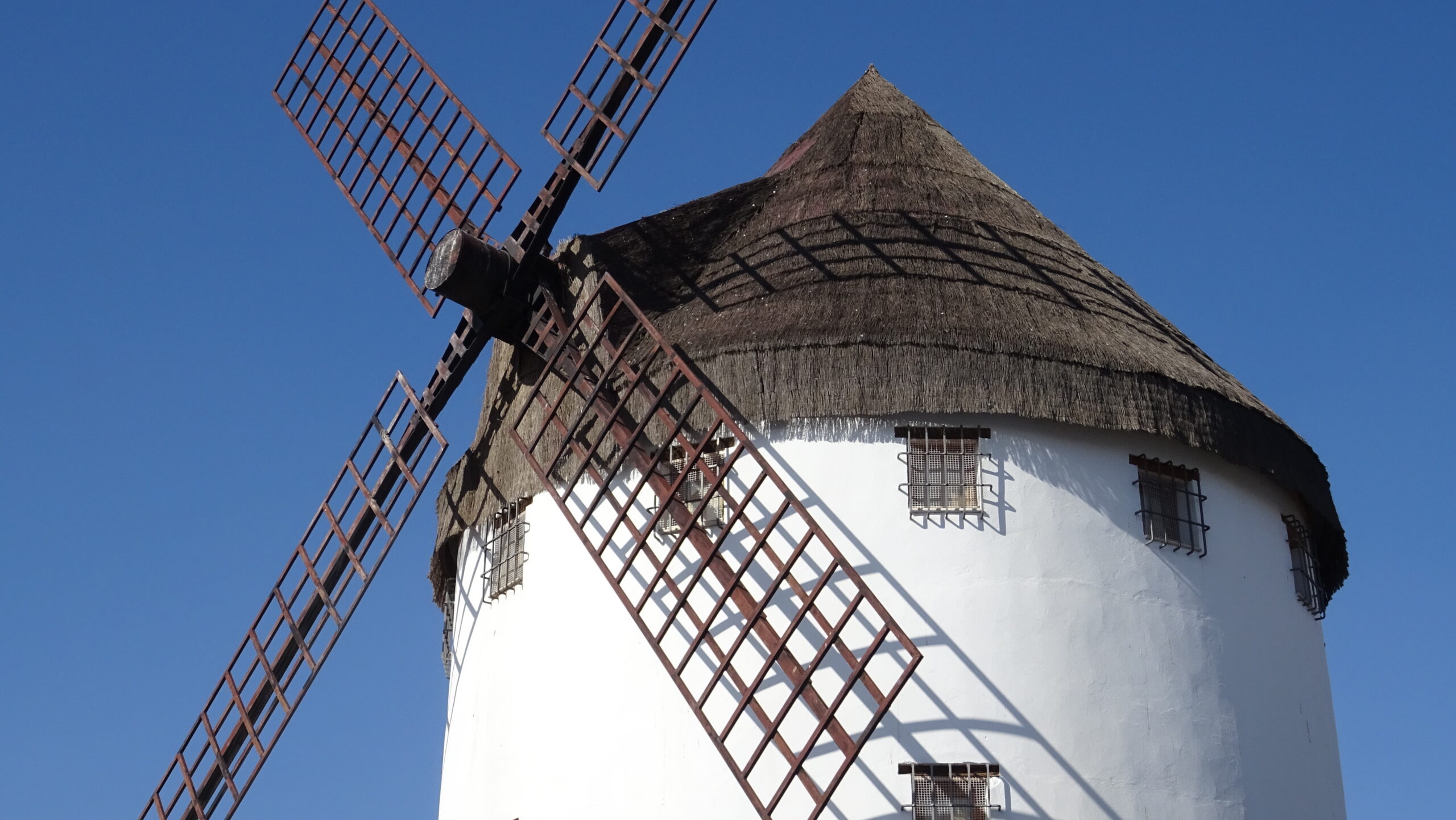Museums
MUSEUM
OF THE MILLS
AND THE CITY OF VALDEPEÑAS
- C. Francisco Mejía, s/n
- 926 31 33 68
- cultura@valdepenas.es
- www.valdepenas.es
HORARIO
ABIERTO JULIO Y AGOSTO – CONSULTAR PREVIAMENTE EN LA OFICINA DE TURISMO 926 312 552
Mañanas de miércoles a sábado: 10:30 a 13:30
Tardes de martes a sábado: 18:00 a 21:00
Domingos y festivos: 11:00 a 14:00

On November 13, 1982, a new museographic space was inaugurated in Valdepeñas, adding to the Mill-Museum, which had been open to the public since the 1950s. This fulfilled Gregorio Prieto’s wish for all his works dedicated to mills to have an exhibition space in his hometown.
To make his dream a reality, Gregorio Prieto donated a plot of land to the Valdepeñas Town Hall for the construction of the Museum. The building, designed by the local architect Vicente Nello, was constructed following the architectural patterns of 16th and 17th-century Manchego architecture. Multiple construction elements such as grilles, columns, wooden beams, and noble coats of arms were collected and reused in the building, giving the new Museum a distinct atmosphere.
The central courtyard is a tribute to all the people of Valdepeñas who fought for the freedom and independence of the town on June 6, 1808, writing the most heroic page in our history. A historical introduction to the events that led to the War of Independence, biographies and documents about key figures from June 6, such as Juana Galán “La Galana” and Francisco Abad “El Chaleco,” as well as a description of what occurred in our city during those days, offer a view of the resistance maintained by the people of Valdepeñas against the Napoleonic invading forces.
The ground-floor rooms are entirely dedicated to the mills, presenting a journey through Gregorio Prieto’s works, showing his defense of this distinctive Manchego structure. His piece “The Mills of Consuegra” stands out above all, showcasing his exceptional painting technique and mastery of color in representing the most iconic mill skyline in all of Castilla-La Mancha. However, his fascination with this type of construction extended beyond the Manchego mill, as we can see works depicting mills he encountered during his travels across Europe: mills from the Netherlands, Belgium, Greece, Austria, Italy, and England.
On the first floor, we find the legacy of Don Eusebio Vasco, which through various documents traces the history of Valdepeñas. Documents from the early 20th century, decrees by local mayors, records of the first wine-growing associations, bullfighting posters, commemorative medals, and more are displayed. In the gallery surrounding the central courtyard, we can admire the collection of photographs and reproductions from the legacy of Don Antonio Merlo Delgado, which provides insight into the evolution of Valdepeñas.
Finally, the museum showcases a collection of art by painters from Valdepeñas at the end of the 19th century, who were the seed of the first exhibition in 1940 that eventually became the current International Exhibition of Plastic Arts. Notable figures include Hurtado de Mendoza, Manuel Delicado, Eduardo Núñez, and Aníbal Sánchez Toledo.
